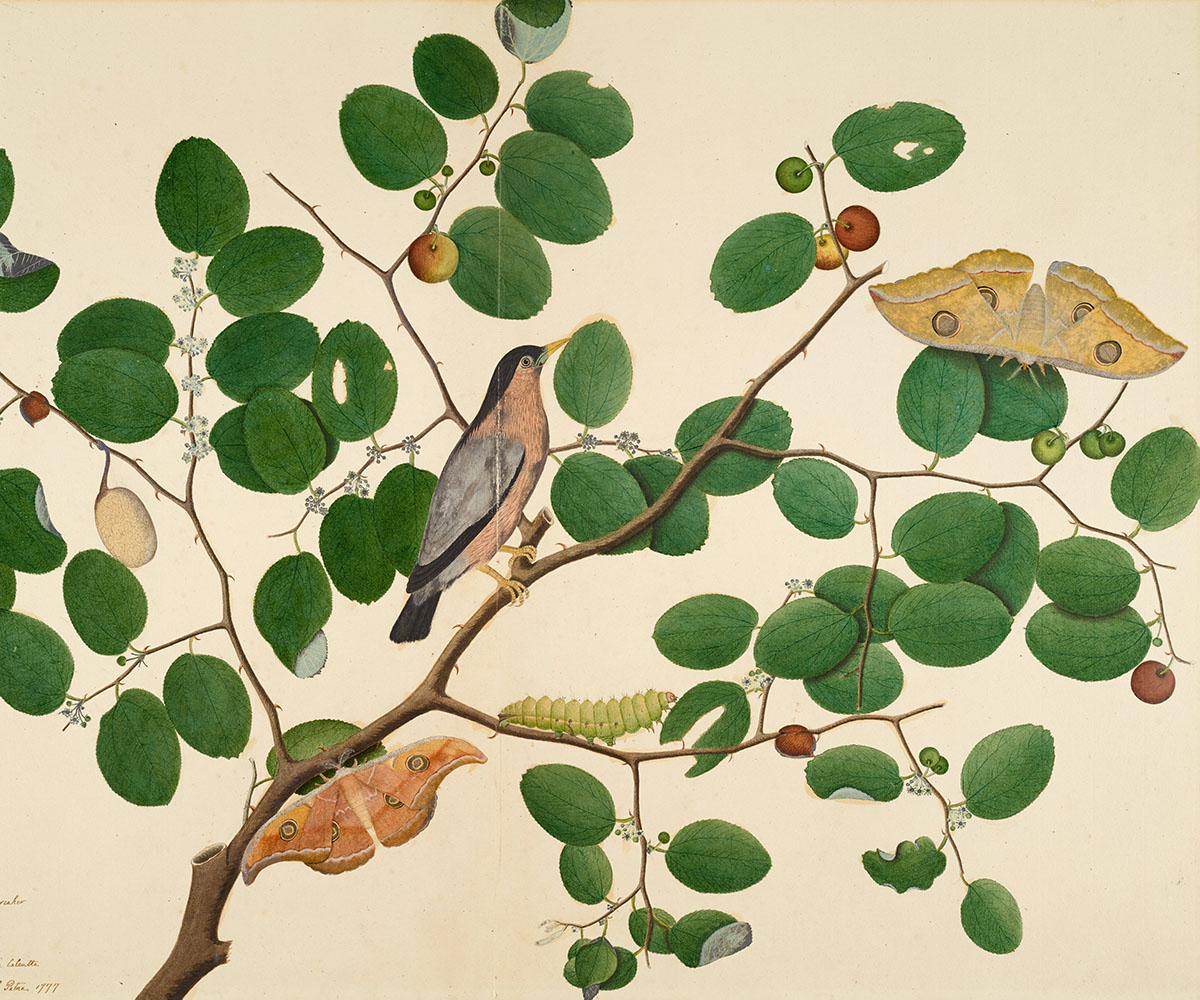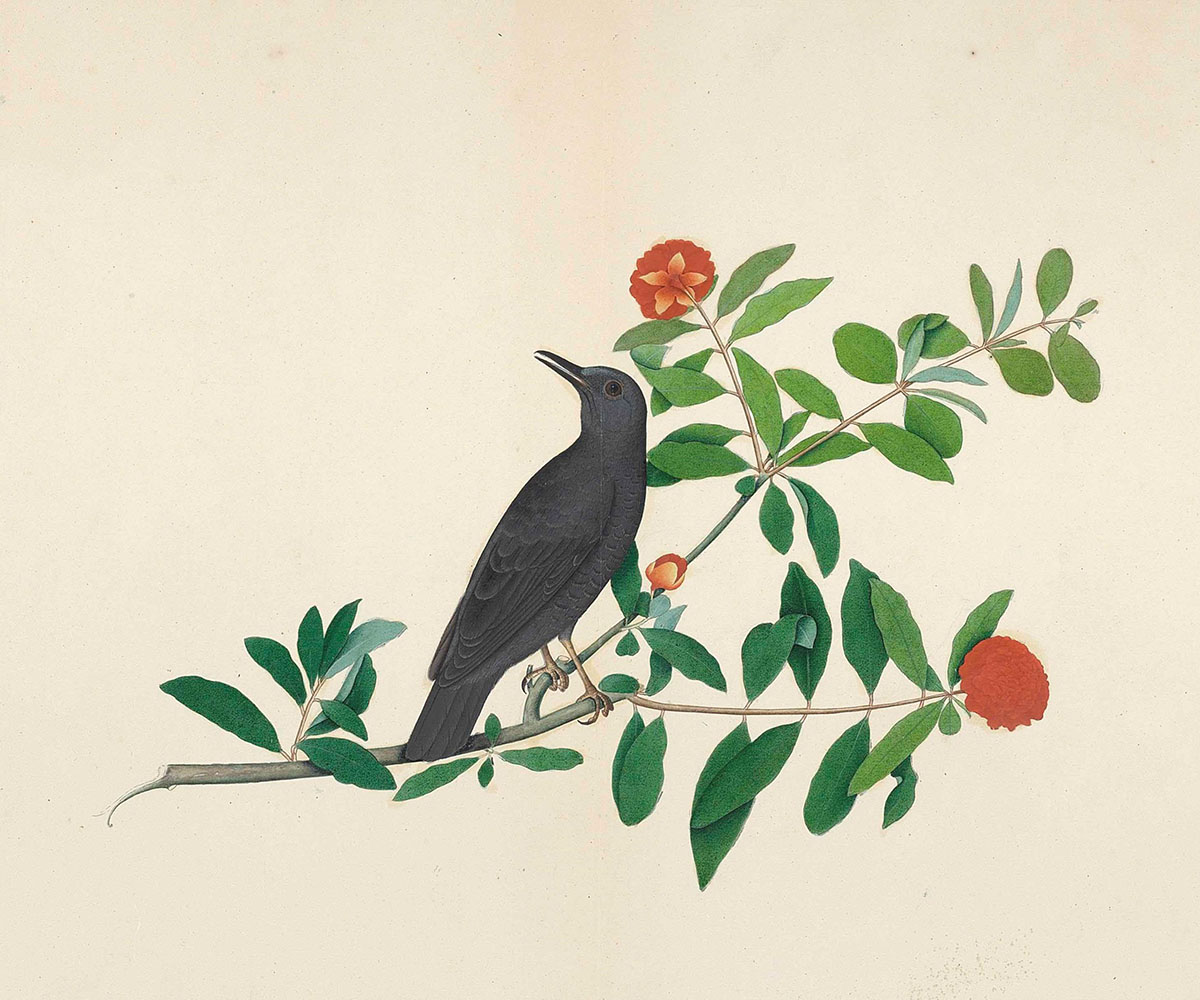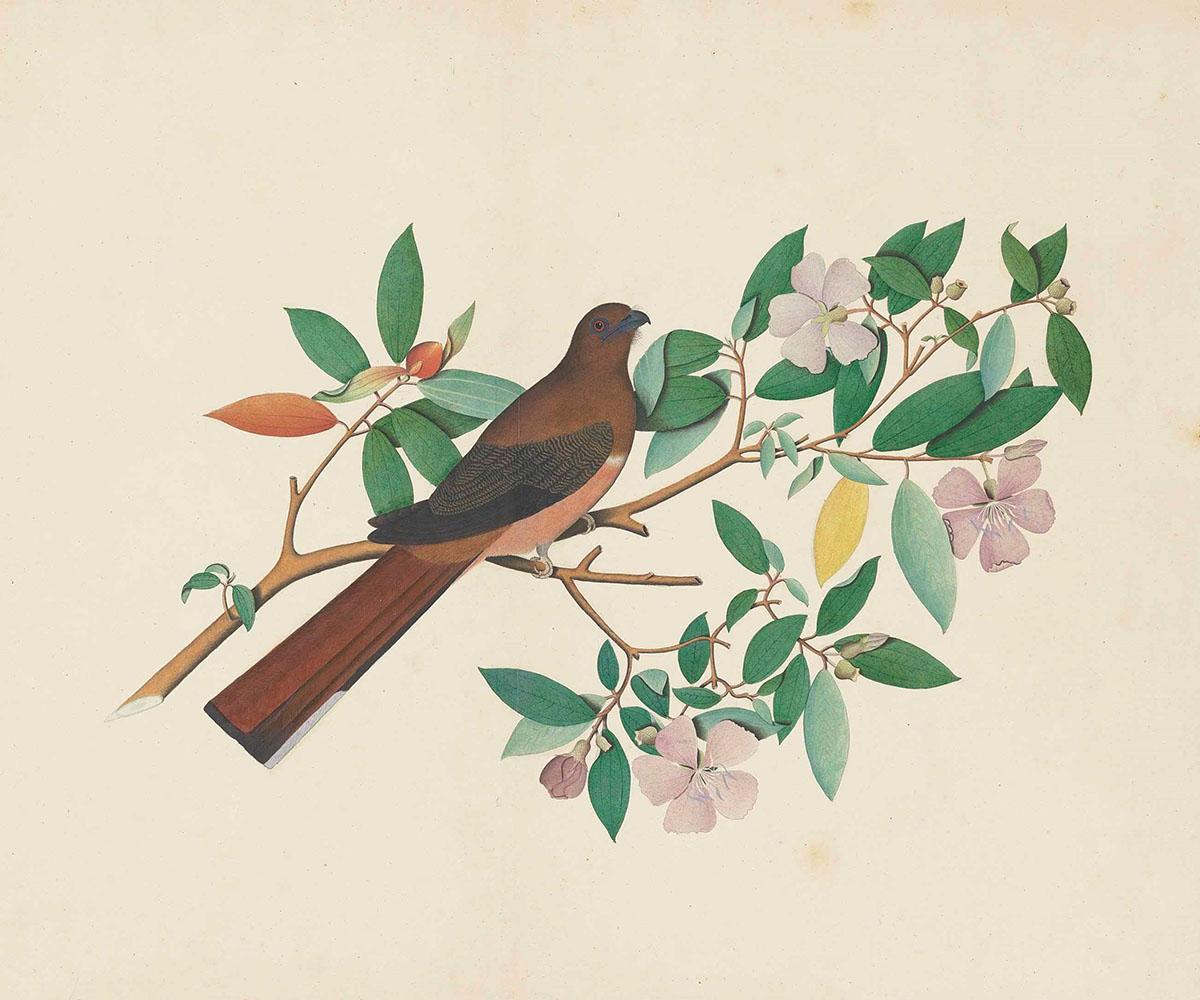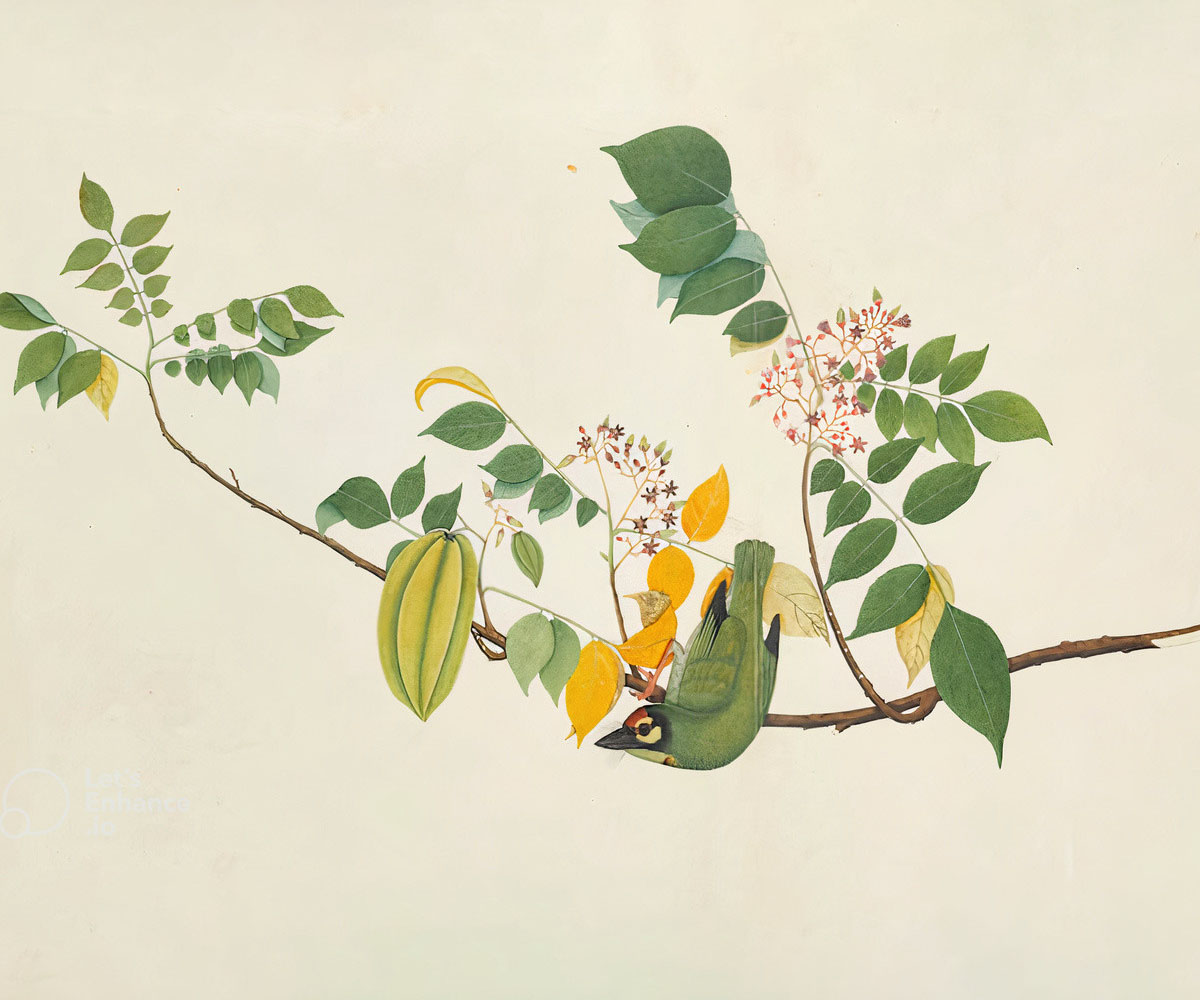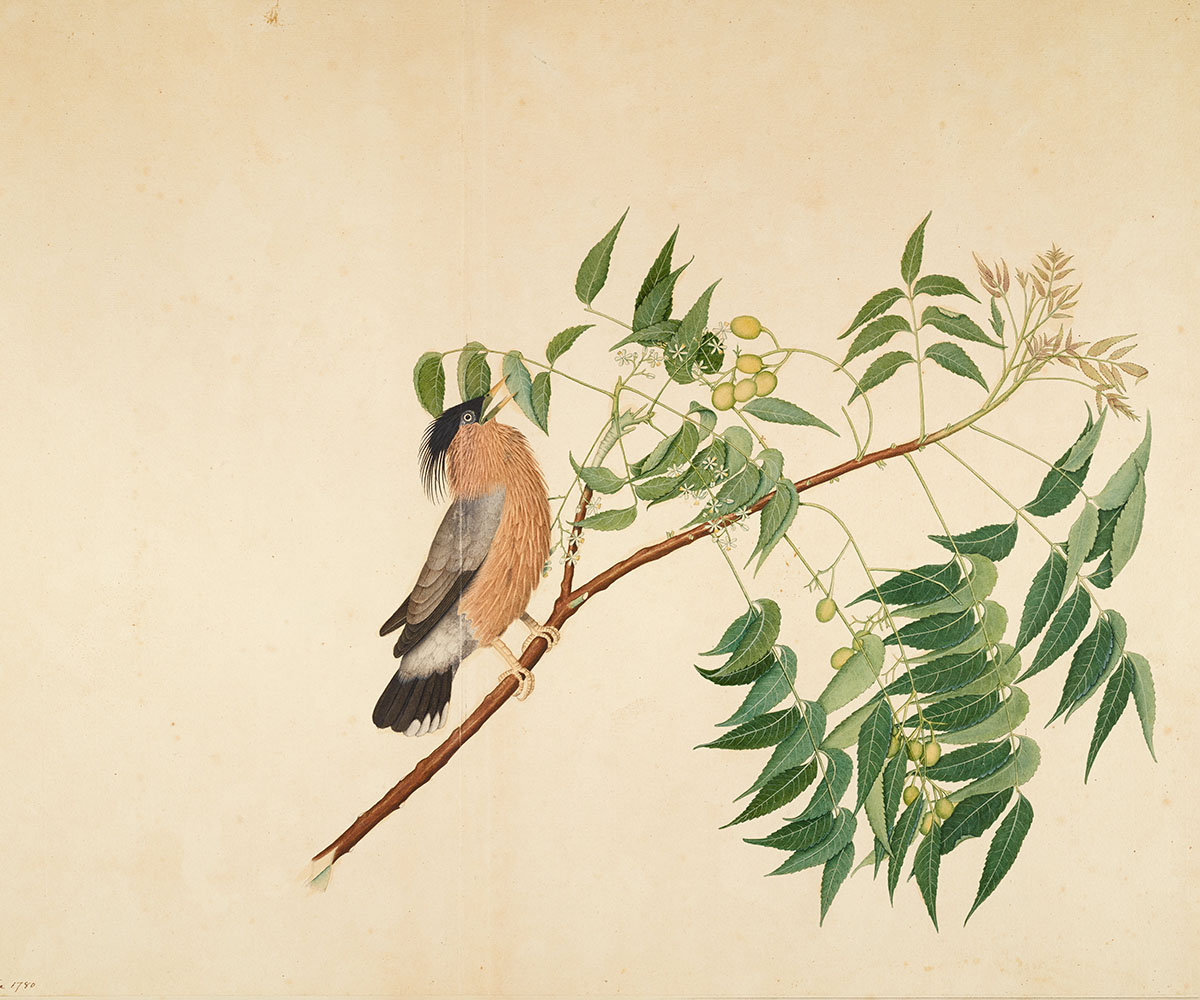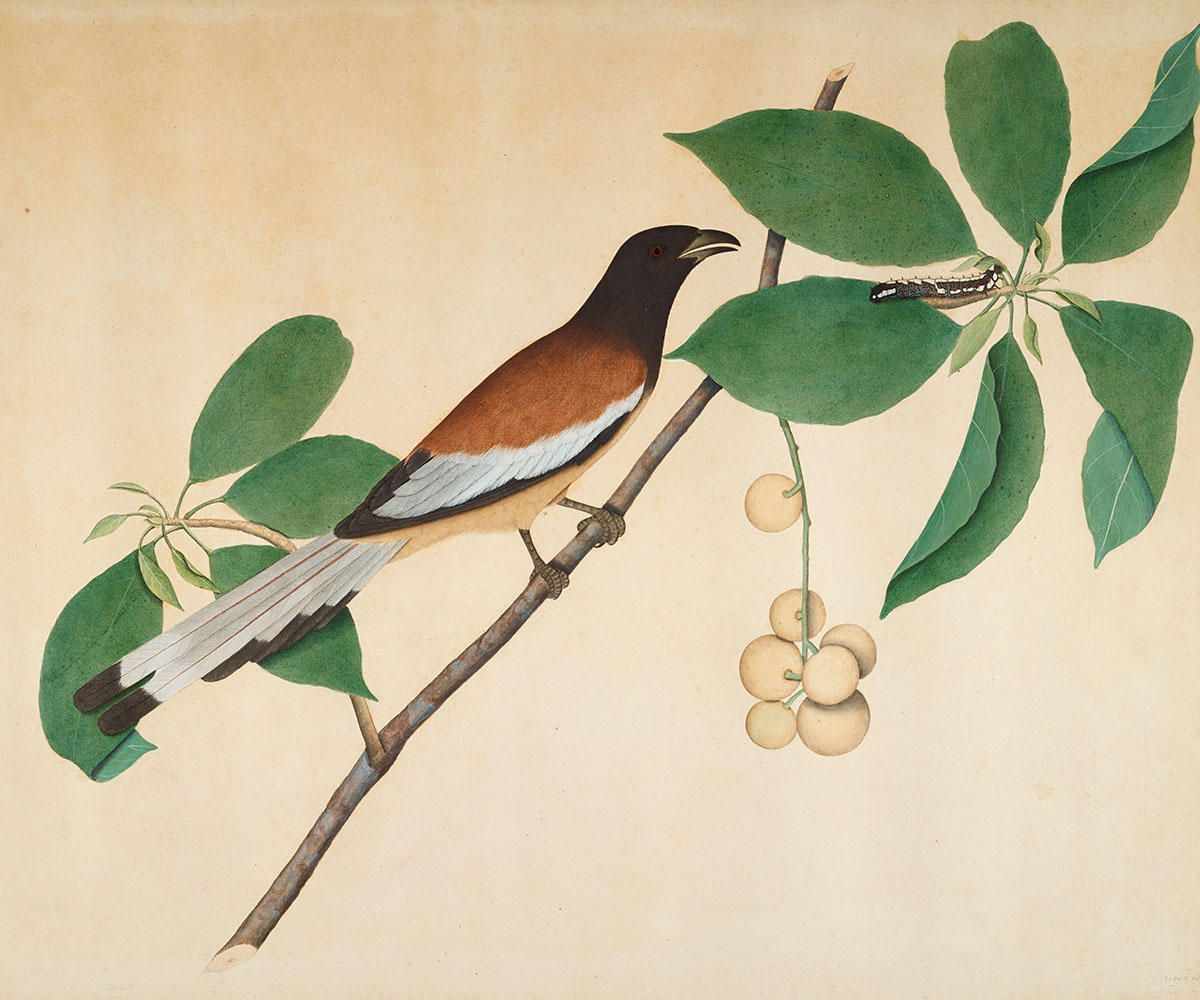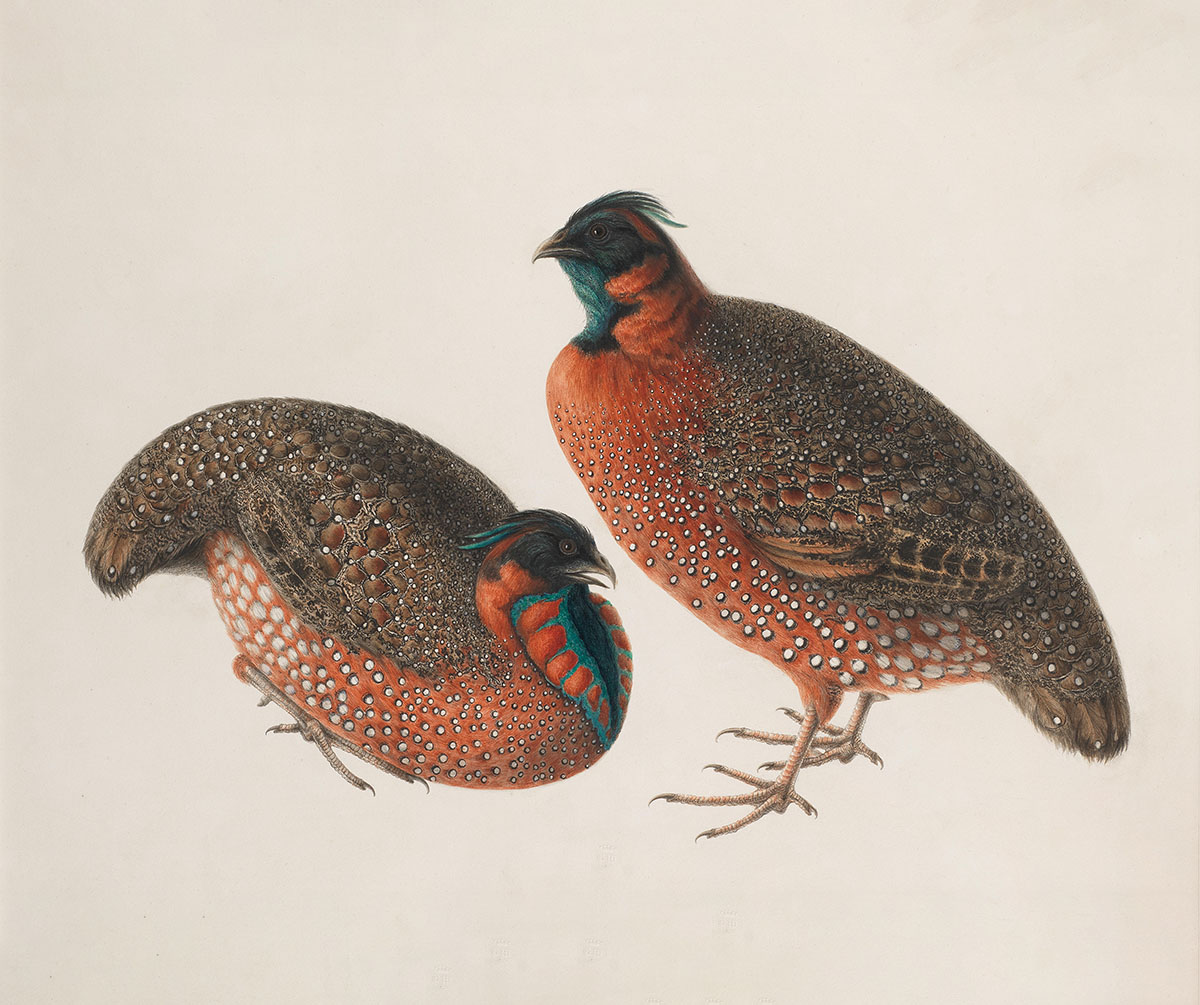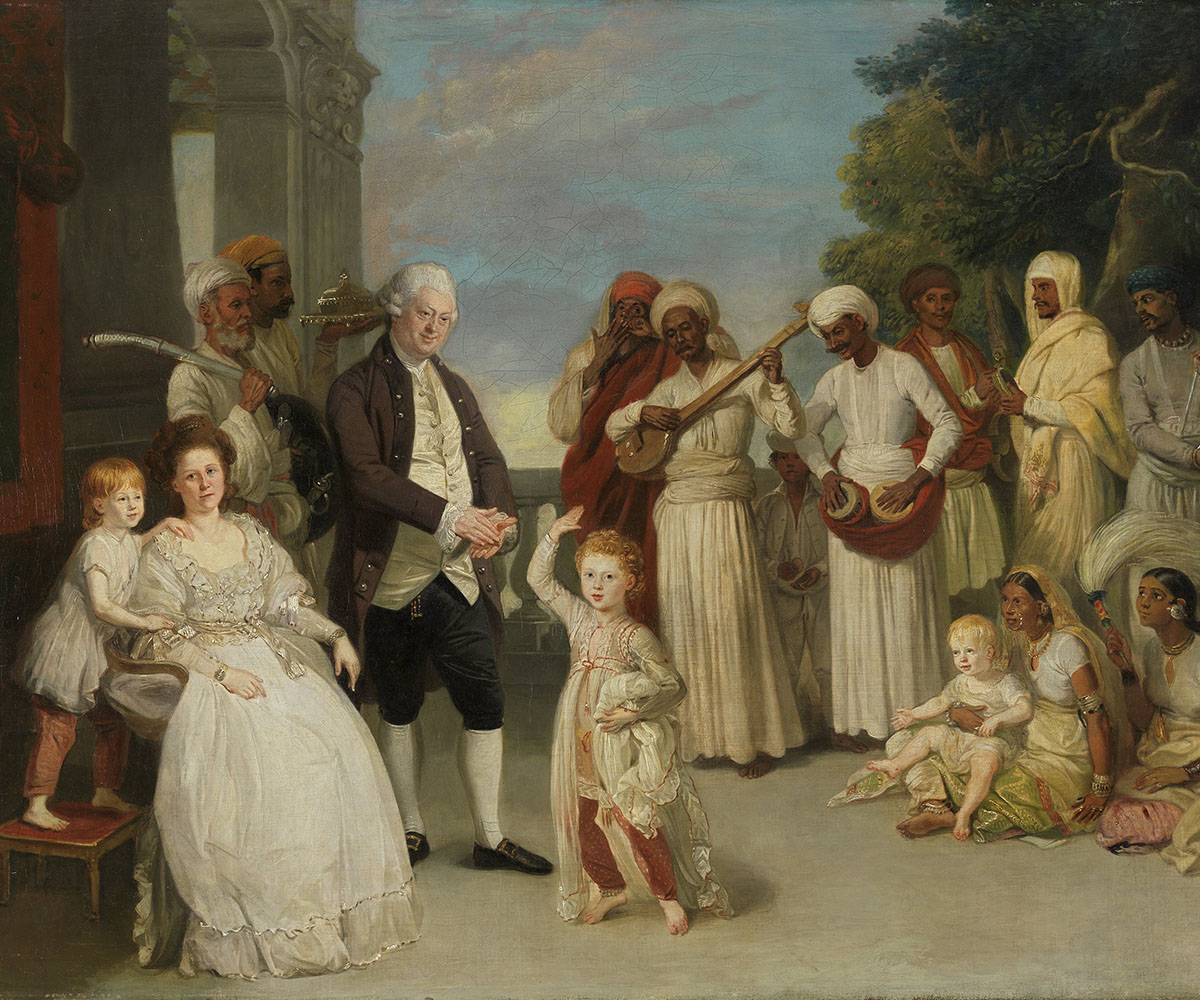PERSPECTIVES
Art Meets Science: An 18th-Century Album Recording the Natural World
Meticulously detailed birds, lush foliage and some curious insects; these paintings from The Impey Album give us an insight into the conversation between South Asian aesthetic traditions and natural history.
In the late eighteenth century, Elijah and Mary Impey arrived in Calcutta (now Kolkata) for Elijah’s tenure as the Chief Justice of the British court at Fort William, the command centre of the Bengal Presidency. The Impeys took an active interest in the culture and peoples of the region and collected Indian paintings. Elijah Impey had learned Bengali and Urdu along with Persian, in preparation for his position as the Chief Justice in India. According to the writer and historian, William Dalrymple, the Impey house was a space for people interested in history and culture to gather.
Mary Impey was an avid naturalist, and the Impeys began collecting native birds and animals in 1775, housing a menagerie of species in the gardens of their large estate. Mary kept extensive notes on the habitat and behaviour of the animals, birds and plants in their collection, which went on to be used by biologists and were foundational to later studies of Indian birds.
Born out of their shared interest in art and natural history, between 1777 and 1782, the Impeys commissioned a series of paintings — collectively known as the Impey Album — depicting the flora and fauna in their Calcutta menagerie. Amongst the numerous Indian artists who worked on the Album, were Sheikh Zain ud-Din, Bhawani Das and Ram Das, whose identities are known from the few paintings they added their signatures to. Trained in Mughal painting traditions which were in decline at the time due to the lack of royal patronage, these artists were brought to Calcutta from Patna specifically for this project. They created just over 300 life-size detailed watercolour paintings. Today, around 197 of these paintings have been positively identified as belonging to the Album and are now scattered across museums, libraries, educational institutions and private collections.
All three artists drew from Rajasthani and Mughal miniature painting traditions, which typically relied on transforming naturalistic elements into decorative motifs. For instance, in the sixteenth-century painting The Emperor Shah Jahan with His Son Dara Shikoh by Nanha, the margins are illuminated with peacocks, peafowls, chukar partridges, and a variety of flowers. Apart from flora and fauna being conventionally used as decorative elements, there were also notable pictorial studies of nature made in Mughal India — particularly those of emperor Jahangir’s favoured painter, Ustad Mansur.
While these artists were trained similarly to previous generations of Mughal artists, with a mastery over fine brushes and the use of a wide range of colours, their work was also part of a new genre of South Asian botanical artworks that emerged within the eighteenth-nineteenth-century Company School tradition. During the colonial period, a few European patrons of Company-style art were surgeons or botanists who were more interested in realism and naturalism, with an eye on scientific precision, than in the decorative or metaphorical interpretation of the natural world. Thus, this vibrant sub-genre of botanical paintings by Indian artists in the colonial period was more than just art — it was also a record of empirical observations of plant and animal species that could also be harnessed for their medicinal or commercial properties by the Empire. For the Empire, this knowledge of native plants was directly tied to their economic interests; it helped them explore the agricultural potential of new plants, how cash crops may thrive across geographies and meet the demands of English consumers and how indigenous plants such as cinchona could be used to prevent or treat various diseases. Over the years, along with the Impey Album, a number of botanical studies abounded — examples include William Roxburghs’s collection that studied and documented plants from the Coromandel region. Company botanical gardens at Calcutta and Sahranpur also employed Indian artists to create a visual record of the gardens’ species.
In the Impey Album images, we see an aestheticisation of nature drawn from the artists’ traditional training. Yet, there is also an impulse of scientific curiosity and documentation. Most of the birds, which appear in more than half of the album paintings, are represented in their natural habitats signalling a purpose of advancing botanical and environmental understanding. Some are painted in great detail against a stark white, unadorned background — perhaps to draw attention to the physical characteristics of the subject. In some of the images, we see that the trees on which the birds appear have been cut off to make the cross-section of their trunk visible — another convention that appears in scientific illustrations. In this curious tension between natural entities being drawn as art motifs or as scientific specimens, we can read a history of exciting and unique disciplinary and cultural overlap.
What do you see when you look at these paintings — art or science?
Bibliography
“Ars Botanica: Refiguring the Botanical Art Archive.” Marg Foundation, 2018.
Jaffer, Amin. “Inside a Calcutta House of the Late 18th Century.” Architectural Digest, 2022.
Welch, Stuart Cary. Room for Wonder: Indian Painting During the British Period, 1760-1880. New York: American Federation of Arts, 1978.




